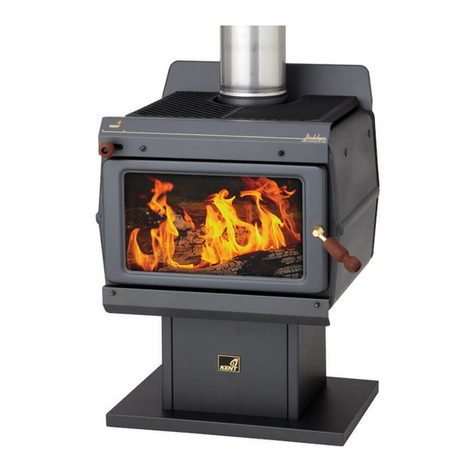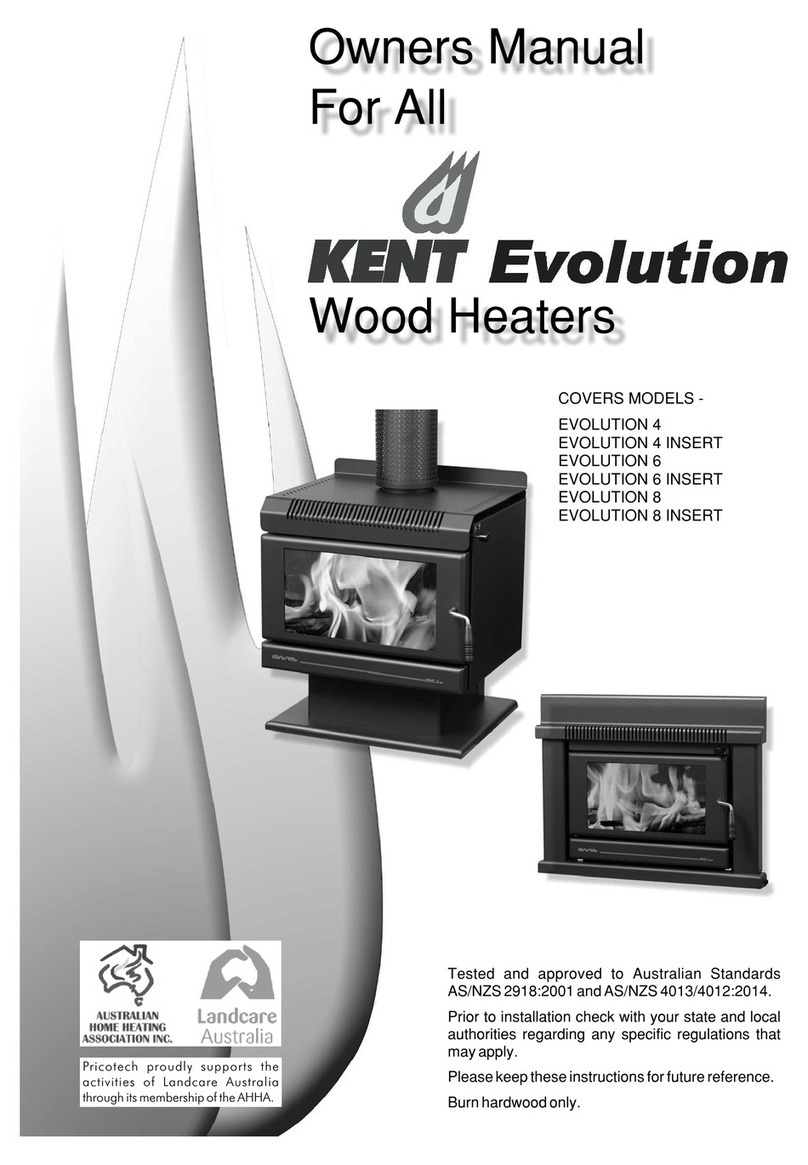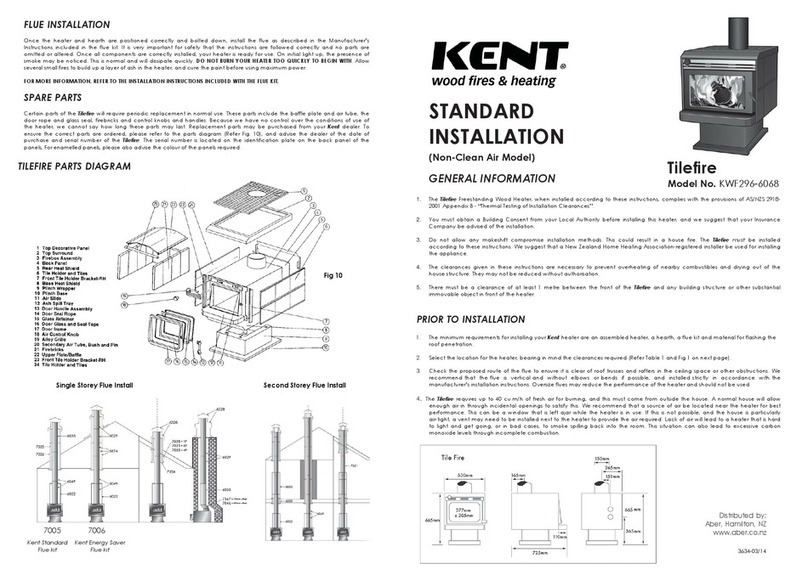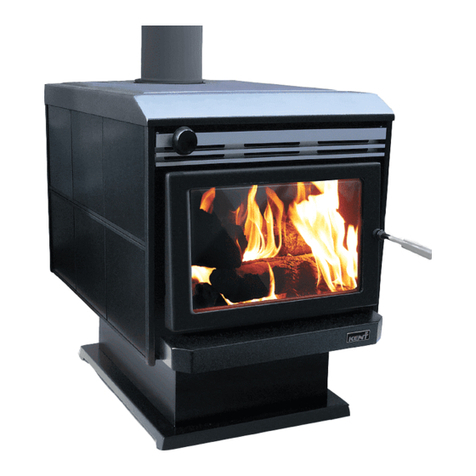FIRST THINGS FIRST...
Congratulations on your purchase of a quality Kent wood heater. This product is designed according to strict
environmental, quality and safety standards and should give you years of trouble free home heating.
Read these instructions carefully to get the most out of your heater and to ensure safe and satisfactory heater
performance. In particular, we would like to draw your attention to these warnings.
ExclusionofLiability
Whilst every care has been taken in formulating these instructions, no responsibility whatsoever will attach to
and/or claim lie against, the manufacturer and/or the distributor of the heater as a result of any failure to follow
the whole or any part of the instructions and/or as a result of incorrect information herein and/or any omission
here from.
2
Becarefulofwhatyouburn:
*Use only dry, well seasoned hardwood.
*Do not use coal or briquettes.
*WARNING: DO NOT USE FLAMMABLE
LIQUIDS OR AEROSOLS TO START OR
REKINDLE THE FIRE.
*Do not burn garbage in the firebox as garbage
can cause a dangerous soot build up and
increase the amount of smoke your heater
produces.
*Do not burn chemically treated timber as the
poisonous gases given off could damage your
stove.
*CAUTION: THE USE OF SOME TYPES OF
PRESERVATIVE-TREATED WOOD AS FUEL
CAN BE HAZARDOUS.
*Do not place any types of builders board eg
fibro, cement sheeting (or any other materials
not specified and tested by the manufacturer)
inside the firebox.
Protect yourself and your family from
burns:
*WARNING: OPEN AIR CONTROL
BEFORE OPENING FIRING DOOR.
*The exterior surfaces of the heater will become
hot during operation. For protection of
children, the elderly or infirm, provide a
firescreen to prevent contact with the
appliance in operation.
*To protect against injury from burns, use
caution when operating the appliance. In
particular, when loading the firebox, provide
adequate protection for your hands.
Use your heater according to these
instructions:
*CAUTION: THIS APPLIANCE SHOULD BE
MAINTAINED AND OPERATED AT ALL TIMES
I N A C C O R D A N C E W I T H T H E S E
INSTRUCTIONS.
*DO NOT BURN WITH DOOR OPEN.
*CAUTION: THIS APPLIANCE SHOULD NOT
BE OPERATED WITH A CRACKED GLASS.
*Do not throw logs into the firebox. Always
place logs carefully.
*Do not overfire (allow firebox to glow red) as
this could damage your firebox.
*WARNING: ANY MODIFICATION OF
THE APPLIANCE THAT HAS NOT BEEN
APPROVED IN WRITING BY THE
TESTING AUTHORITY IS CONSIDERED
AS BREACHING AS/NZS 4013.
*The appliance or flue system should not be
modified in any way without the written
approval of the manufacturer.
The heater can get very hot, so watch
obviousfirehazards:
*Do not place clothing or other combustible
materials on top of the heater.
*WARNING: DO NOT USE FLAMMABLE
LIQUIDS OR AEROSOLS OR PLACE
THESE IN THE VICINITY OF THIS
APPLIANCE WHEN IT IS OPERATING.
*WARNING: DO NOT STORE FUEL
WITHIN HEATER INSTALLATION
CLEARANCES.
*Do not store flammable liquids near the
heater.
































